A King Among Seikos... King Seiko 4402 8000 & A Little History
Seiko makes some of the most accurate and best mechanical watches in the world under their Grand Seiko line today. It was the same as well in the late 60s and 70s when they were makers of possibly the most accurate mechanical watches then, under Grand Seiko and their VFA~Very Fine Adjusted caliber chronometre watches.
I don't own a Grand Seiko for several reasons but a key one is aesthetics as I am not so into it's trademark gothic fonts and certain stylings of it so don't foresee myself owning one for the time being(never say never and I am tempted by some models) but I definitely appreciate it for it's philosophy on making refined, reliable and precise luxury watches without unnecessary elaboration or decoration... "Just pure, simple and basic watchmaking raised to the level of an art form"
And for now, I can't seem to justify their price tags seeing that there are sooo many good Seikos(both in their vintage and modern ranges) for less than $500(many below $200) to be had that tick many of the boxes important to me. [You can see this in my recent acquisitions of Seiko divers in posts below.] It is also because I prefer wearing versatile sports watches and hardly wear dress watches so don't intend to spend a whole lotta $$$ on a dress watch, which most Grand Seikos are.
So we come to a refined dress watch today from their King Seiko line, manufactured at the Daini(second) Seiko factory in the 1960s.

Some Key Dates & Information
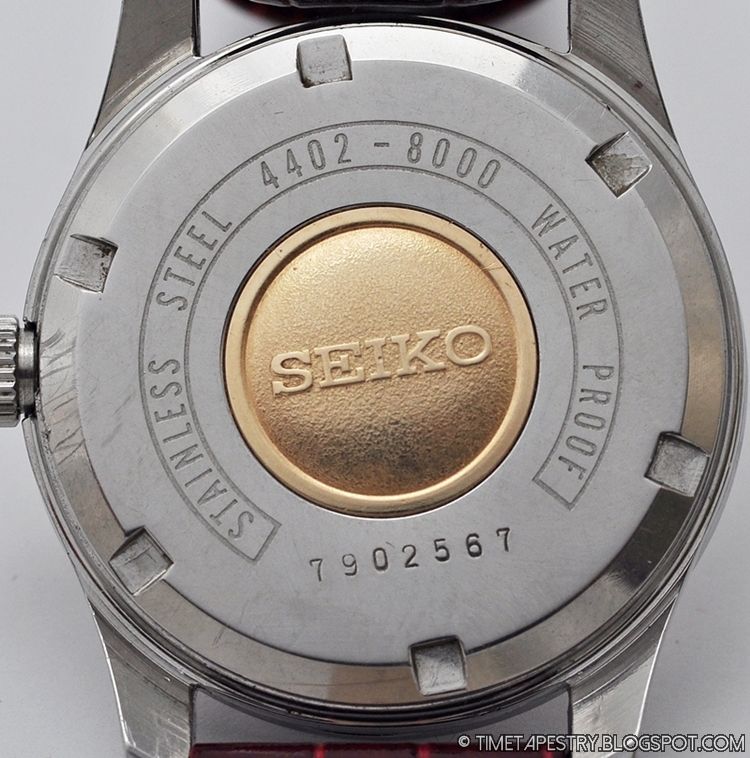

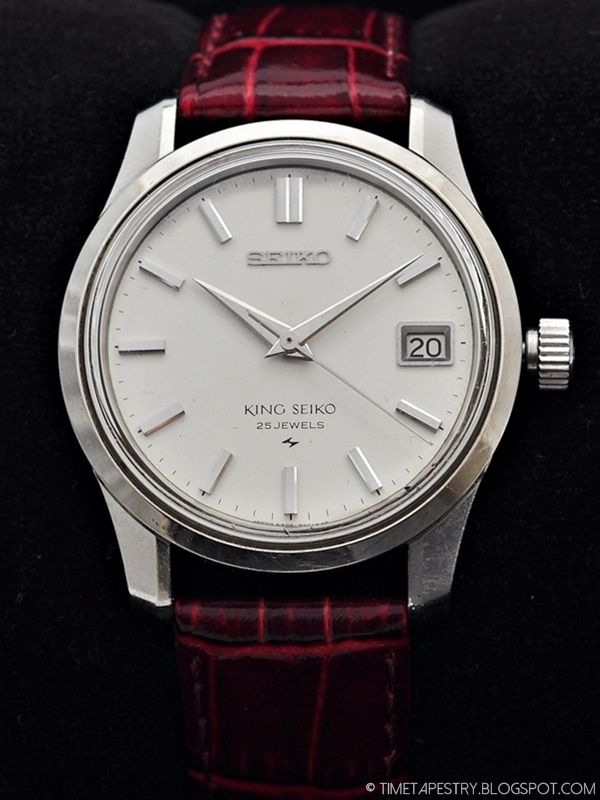

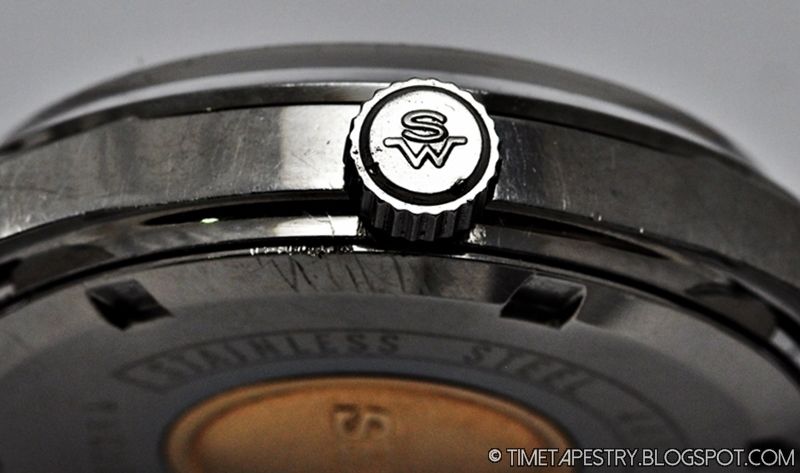
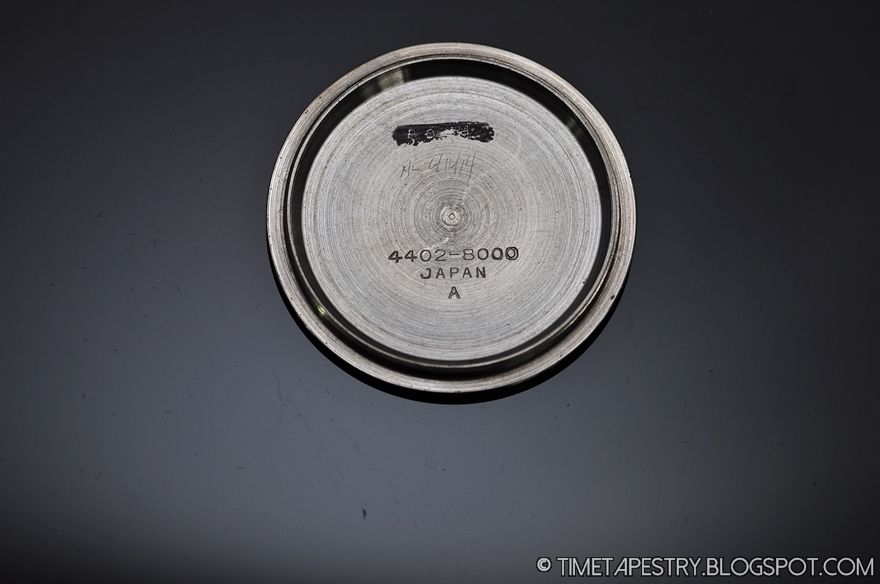
2 wrist shots follow... 35mm by 42mm on my7+ 8 inch wrist
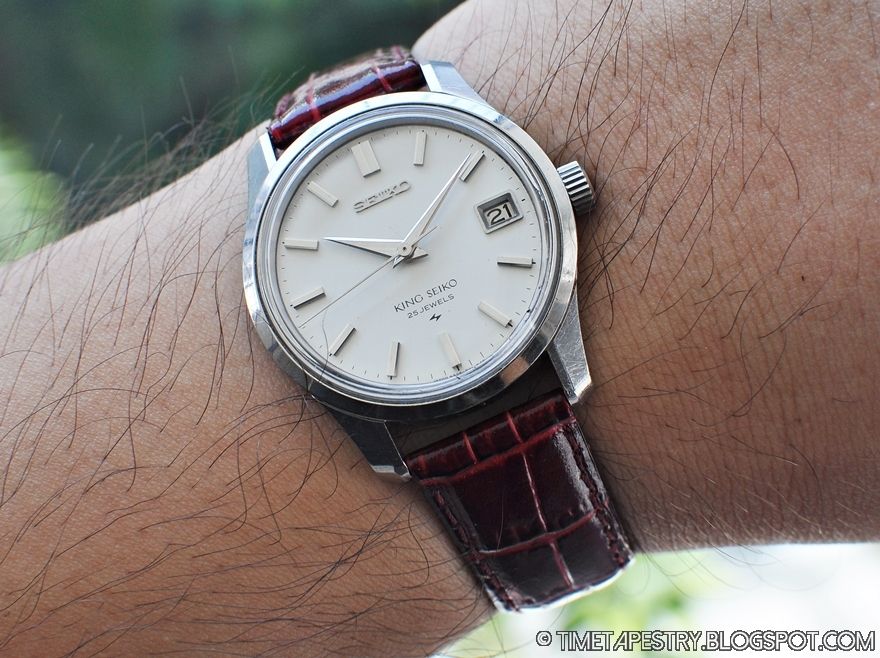

The 4402 8000 King Seiko is a clean, simple and wonderful vintage dress watch from the most accurate mechanical watch in-house manufacture at that time. It is undervalued impo and i am happy to have it in my watchbox for the (few) days in a year, I do decide to wear a dress watch
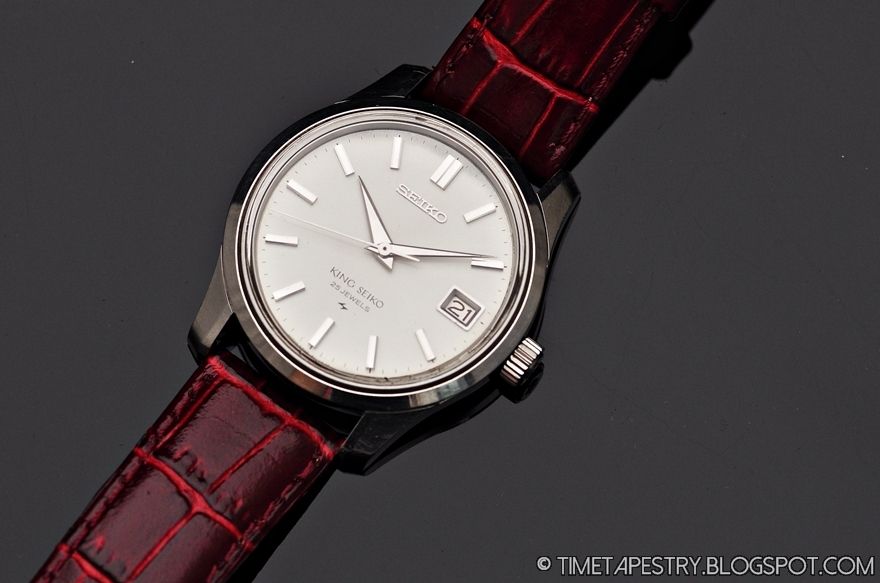
I don't own a Grand Seiko for several reasons but a key one is aesthetics as I am not so into it's trademark gothic fonts and certain stylings of it so don't foresee myself owning one for the time being(never say never and I am tempted by some models) but I definitely appreciate it for it's philosophy on making refined, reliable and precise luxury watches without unnecessary elaboration or decoration... "Just pure, simple and basic watchmaking raised to the level of an art form"
And for now, I can't seem to justify their price tags seeing that there are sooo many good Seikos(both in their vintage and modern ranges) for less than $500(many below $200) to be had that tick many of the boxes important to me. [You can see this in my recent acquisitions of Seiko divers in posts below.] It is also because I prefer wearing versatile sports watches and hardly wear dress watches so don't intend to spend a whole lotta $$$ on a dress watch, which most Grand Seikos are.
So we come to a refined dress watch today from their King Seiko line, manufactured at the Daini(second) Seiko factory in the 1960s.

- In 1968, in the last of the Chronometre(read accuracy) competitions, the 'Accuracy Observatory Trials at Neuchatel' during that period, the watches from Seiko's Daini and Suwa factories were the most accurate mechanicals out there, trumping what the Swiss and others had to offer.
- Daini and Suwa factories were setup to compete with each other and both made Grand Seikos. Only Daini made King Seikos though.
- Back in the 60s and 70s, Grand Seikos had chronometre certs and were adjusted to a higher accuracy. King Seikos were not certified for accuracy but some of these watches had similar internals to the Grand Seikos. The first GS from Daini is the 44GS which was reissued last year LINK.
- In 1975, due to the quartz crises, that they were very much a part of creating, they could not keep these premium mechanical lines alive. The Grand Seiko line and the King Seiko line ceased production.
- From a co. history standpoint, they had challenges in the late 80s after the Plaza Accord from the G5, which weakend USD against the Yen and Deustschemark and suddenly had trouble selling Seikos cause the Yen was too high against the dollar.
- Interestingly, it was against this backdrop that in 1988, they decided to revive the Grand Seiko line with high end quartz watches.
- In 1998, they re-introduced mechanical watches to the Grand Seiko line.
- Current day Grand Seiko mechanical watches have a target accuracy range in use of -1 to +10 seconds per day. But in their tests of uncased movements, the requirement is for a mean daily rate in different positions of an impressive -3.0 ~ +5.0 seconds/ day i.e. better than COSC which is -4 +6, also based on the uncased movements.
- Per their site: "Grand Seiko Standard Inspection," which measures gain / loss (daily rate) under various environments, is carried out at the manufacturing plant for 17 days in total, and only mechanical watches that satisfy the standard are given the title of "Grand Seiko." More info on the certification here LINK and faqs here LINK
my watch from Sept 1967 based on the caseback serial number. first digit for year and second digit month for the serial number

the silver dial on mine has some signs of aging but not too significant to be distracting. the case shows brushed and polished finishing with a polished bezel(it could do with a round of finishing actually)... and the indices are beautifully faceted catching the light at different angles and going from a dark black look to a light silver look as shown in the next 2 pics

Double batons at 12 'o clock and single batons for the rest of it which is my preferred configuration. as the indices have different surface treatments, the play of light over them makes this a joy to look at in different angles

the beautiful hour and minute dauphine hands are also faceted and the date window has a silver frame

Crown is signed SW for Seiko Watch i think

and it's in pretty good shape on the inside too... not too bad in terms of corrosion on the caseback... minimal pitting

4402-8000 (4402A) Caliber with 25 Jewels. Manual Winding & Hacking (Seconds stop when crown is pulled out to time setting position for accurate, to the second, time setting). Low beat movement with a frequency of 18,000 bph
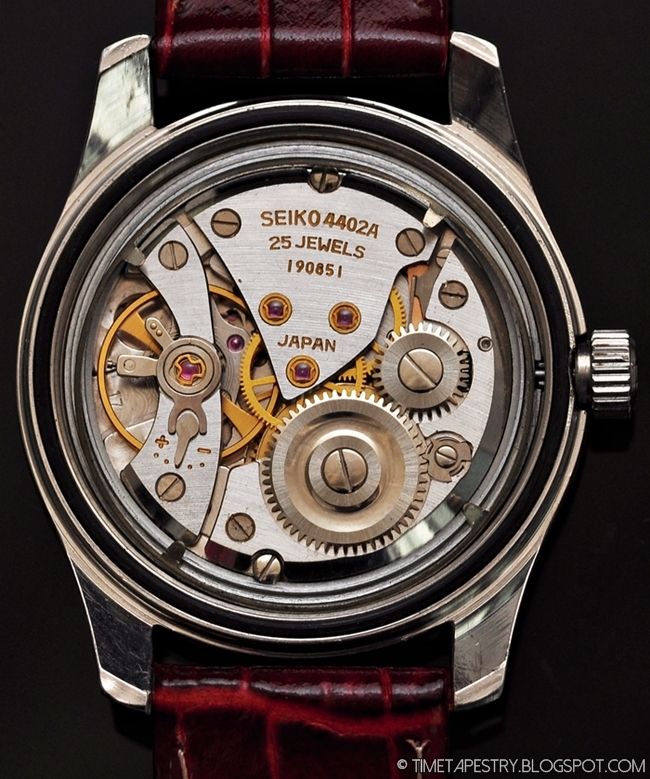
and it still keeps good time too :)
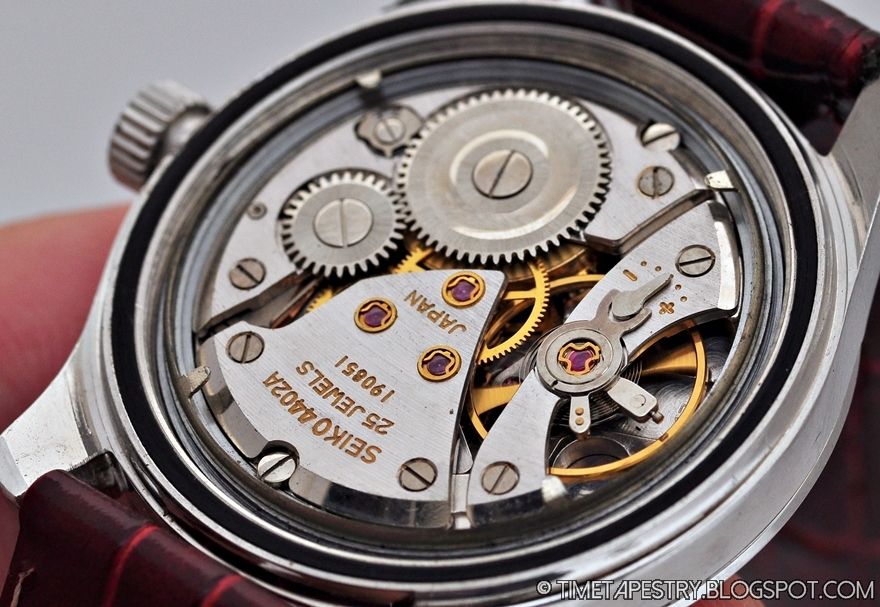

and it still keeps good time too :)

2 wrist shots follow... 35mm by 42mm on my

most will regard it to be on the small side but how big do you need your dress watch to be? 39mm? >40mm?
35mm sounds small but the 42mm lug to lug helps and it is wonderfully balanced.

The 4402 8000 King Seiko is a clean, simple and wonderful vintage dress watch from the most accurate mechanical watch in-house manufacture at that time. It is undervalued impo and i am happy to have it in my watchbox for the (few) days in a year, I do decide to wear a dress watch

and that's it for this post... The next post will feature a watch that is the complete, utter opposite of this. can you guess what it is? stay tuned ;) cheers, raph

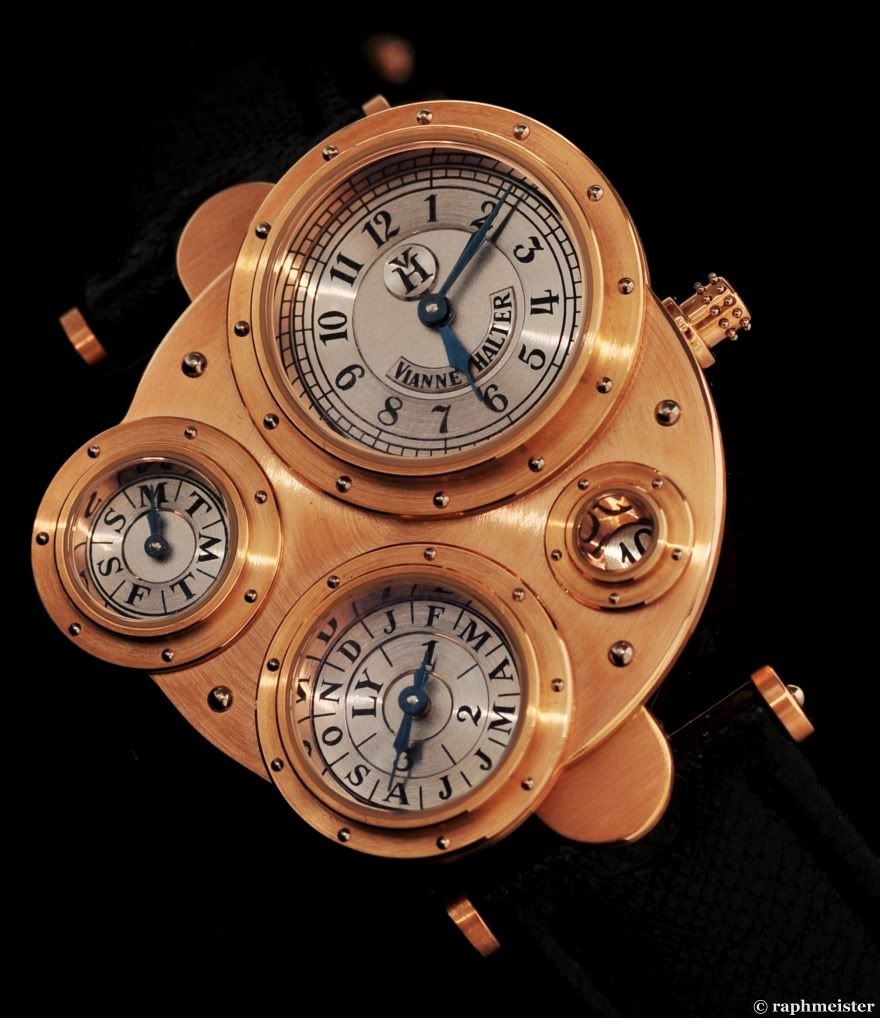
2 comments:
Very nice Seiko....seems they've been making nice stuff for a long time
affirmative :) but these would be on the small side for current tastes in general. i'm happy with it as a whole though.
Post a Comment